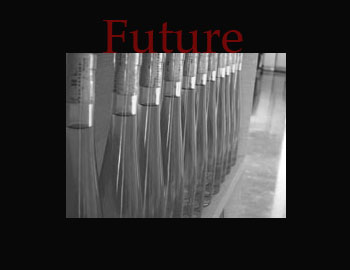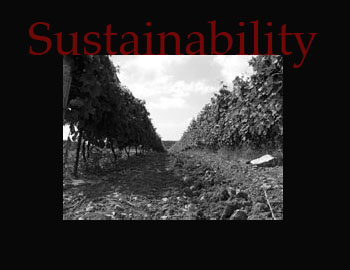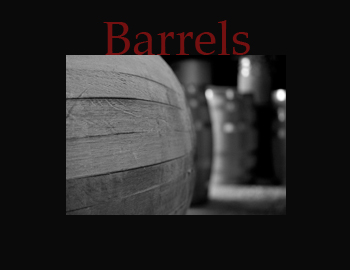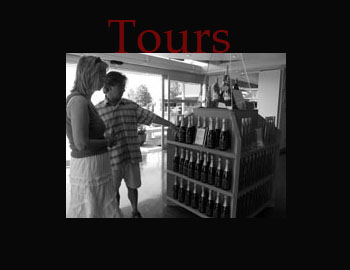The Future of Wine in Prince Edward County
By: Ashliegh Gehl
With files from Steph Crosier and Jennifer Bowman
When Waupoos Winery opened in 2001, it sparked a chain reaction in Prince Edward County. One by one, new wineries opened along main arteries, luring tourists to taste grapes from the county.
In the early 90s, planting vines for wine wasn’t on the agenda for county farmers. It wasn’t even seen as a viable use of farmland.
But that all changed when Waupoos rowed their first half-acre of vines in 1993. They did more than pioneer the local wine industry; they changed the perception of the county by creating a new wave of wine and culinary tourism never experienced in PEC before.
Karin Desveaux-Potters, who works in PEC’s economic development office, focuses on food, beverage and agriculture business development in the county. She says traditionally tourists visited the area for the beaches, now they’re coming for the wine.
“Once upon a time, tourists may just come to the Sandbanks and bring all of their supplies,” she says. “They’d truck in and truck out, never getting out to visit the county.”
Today, tourists are opening their wallets to swirl, sniff, sip, swish and spit wine like a professional. They’re taking artisan cheese making courses at a culinary school and sitting in the lotus position at the crack of dawn for yoga in a vineyard.
Kemp Stewart, owner of Hillier Creek Estates, says the budding wine industry has changed the complexion of the county by drawing in tourists and creating hundreds of jobs. After all, only 10 years ago there was one winery on the map. Now, there are 34.
Most county wineries are classified as artisanal boutiques. These are properties where wine is grown and sold, but not necessarily commercialized.
Large-scale country wineries like Huffs and Sandbanks are estates. They have a lot more than wine on the menu.
Art galleries, helicopter tours, a chocolatier store, restaurants featuring world-renowned chefs, and a busker’s festival add to the allure of traditional wine tasting rooms. The reason for these attractions is simple.
It’s to make money.
But winemaking isn’t a get-rich-quick endeavour.
John Rode, associate winemaker of Harwood Estate Winery, who made his first batch of wine in 2007, says if they’ve crafted their business well, the payoff comes five to 10 years down the road.
“So is it making money?” Rode says. “No, not yet. We’re not at the fifth year yet. At the fifth year we think we’ll stop spending money we’re not making. But is it doing well? Yes it is. As a matter of fact, this year we’re doing twice as well as last year.”
Rode doesn’t seem concerned about his investment in Harwood. He says his family has a history in long-cycle businesses.
“Our family is used to this,” he says.
Unlike wineries with additional tourist attractions, Harwood has taken a different approach. They’re off the electrical grid, operating three large buildings on solar power.
What makes them unique, aside from their signature vintage, is the title they’ve claimed. Out of Canada’s four viticultural areas, Harwood’s eco-centric sustainable appeal singles them out as the second off-grid winery in Canada – the first being Redtail, also located in PEC.
 |
| A winery worker checks the vines. |
Harwood lacks in on-site attractions, but they’re appealing to the tourist looking to see how an eco-friendly, handcrafted product is made. They’re even looking into state-of-the-art wind power designs to put on the roof of their facilities.
Small wineries aren’t the only ones having difficulty making profits. Stewart knows how difficult it is to make a dime off wine.
“Last year we only sold wine through our retail sales store and we cannot cover all of our operating costs, that’s labour and supplies and so on,” says Stewart. “And I would have to more than double my sales.”
Operating Hillier Creek Estates costs more than $450,000 a year, with $200,000 going towards labour costs, he says. The rest is reflective of fuel prices, chemicals, netting and general maintenance.
“So what we’ve done this year is we’ve added a patio and a wood-fire pizza oven,” says Stewart. “And we’re in the process of being an estate winery.”
To be an estate, there’s no shortage of municipal red tape. The road has to be a minimum of 20 feet wide, says Stewart. On-site washrooms and regular health inspections are also part of the deal.
Stewart says the move is worth it. Becoming an estate allows Hillier Creek to have banquets, bands and other festivities not permitted with boutique wineries.
If there’s a winery in the county that has mastered how to market its wine, it’s Huff Estates – the Cadillac of local wineries.
General Manager Jason Sharpe doesn’t hide the winery’s objective. It’s about money.
Since wine production doesn’t necessarily pay for itself, Sharpe says Huff’s has created a “destination within a destination” when it opened its doors in 2004 and expanded in 2006 with an inn.
 |
| Guests sample wine at Huff Estates. |
“There was a lack of fine accommodation in the county,” says Sharpe. “Lack of accommodation as a whole.”
Huff’s presents guests with an upscale experience. In 2009, it partnered with Oeno Gallery to offer guests fine art. Last June, Huff’s expanded its art appeal by creating a mile-long sculpture garden with pieces by 40 Canadian artists. It also partnered with Kingston Heli-Tours, giving guests an aerial experience.
Without tourism, the county wouldn’t be able to sustain itself, says Rode.
“The County really needs tourism,” he says. “It had an agricultural economy. And it still has. That’s never going to go away because there’s a lot of room here. That’s what agriculture needs; it needs room, land. But the agricultural economy isn’t supporting everyone who wants to live in the economy. And some people aren’t making a living. You need business for that.”
Business is where the wineries step in, focused on creating a quality product. Adding more than wine to the menu doesn’t mean wine sales in PEC are low.
A study conducted by the Economic Planning Group in PEC reported in 2010 there were $8.5 million in wine sales. That’s about 54,000 cases of wine. A small startup winery may not generate a lot of wine revenue, but the industry as a whole is bringing in money and tourists to the county.
“There’s about 500,000 [tourists] that come into the county,” says Stewart. “For the wineries, there’s about 150,000 visitors.”
Most visitors are coming from Toronto, Ottawa and Quebec.
County wineries are in a position where they depend on outsiders to bring business, says Rode.
“If we were in downtown Toronto on Yonge St. we wouldn’t care too much about tourism, because there’s already so many people there,” says Rode. “But we’re in a place where people have to come from somewhere else.”
Norman Markland, events and marketing coordinator for Picton’s Business Improvement Association, has lived in the county his entire life.
“The wine industry sort of grew up and now we have different clientele,” he says.
It’s not just family clientele coming to the Sandbanks. It brought in people who have more disposable income. It’s these people who are renting luxury homes from Sandbanks Vacations for a week at a time to take in county life.
“We’re the next Niagara on the Lake,” says Markland.
Figuring out how to make money from wine isn’t the only obstacle wineries are up against. A short growing season prevents the county from becoming a mega wine-producing region like Canada’s largest viticultural area, the Niagara Peninsula.
“I wish I had a crystal ball,” said Stewart. “Niagara is really quite spread out along the lake. What we found, and if you take a look at one of our wine maps, the majority of wineries are in the old Hillier township.”
Desveaux-Potters says it takes a lot of extra work to maintain vineyards in the county. It’s another preventative towards the county mimicking Niagara.
Climate and marginal growing conditions put a damper on the industry expanding. Producers have to hill and de-hill, burying vines over the winter. In the spring, fires are set and the vineyard needs to be heated to the grapes can grow.
“In terms of large-scale production, I don’t know how easily that will translate,” says Desveaux-Potters.
Growing season limitations haven’t stopped the wineries from becoming one of PEC’s top employers.
They employ over 160 people on a quasi-fulltime basis for more than eight months a year and more than 200 seasonal offshore workers. That’s about $4.5 to $5-million in wages. And residents of Prince Edward County occupy 75 per cent of the jobs.
Desveaux-Potters says wineries have brought a lot of spin-off business to the county.
“It’s a bit of a trickle-down effect,” she says. “Based on the grape production and wine production, there’s a whole series of other businesses that have chosen to locate here. And sort of capitalize on the opportunity. Various chefs from parts of the province and the globe, actually, establishing their field to table businesses here based on access to local ingredients and the wine.”
What first started as an affair with wine has turned into a culinary affair. It’s an interdependent relationship heavily reliant one another.
“I think it’s a symbiotic relationship,” says Stewart. “Would folks come to the county specifically for the gastronomic experiences, maybe, but certainly not as many. Would as many B&B’s and that sort of operation have a need to exist, not likely. I think that having the wineries, especially located basically in Eastern Ontario, the wineries are a tremendous draw to Prince Edward County.”
As the cliché goes, cheese and wine go hand-in-hand. The county is home to Fifth Town Artisan Cheese Co., a company founded in 2002 by Petra C. Kassun-Mutch, a former publishing executive from New York.
“And then, of course, by having wineries it goes hand in hand with the culinary aspects,” says Stewart. “It goes hand-in-hand with accommodations with other attractions, festival players and all the other activities that do take place in the county during the summer.”
As culinary experiences in the county expand, so will the wineries. Stewart says he sees more popping up in the future.
“Would it be fair to extrapolate we could have upwards to 70?” he says. “I think 70 might be high, but between 50 and 60 would be quite reasonable.”
As the wineries expand, so too will offshoot businesses.
Five years ago county locals Pete Bradford and his partner Marla started the Carriage House Cooperage. They handcraft signature, artisan barrels used locally and abroad.
| Pete Bradford, owner of The Carriage House Cooperage, sold everything to craft wine barrels. |
“Sold my house, cashed in my RSP’s and we own wood,” says Bradford.
As a two-person team, they build 225-litre barrels for 23 local wineries in the county. They’ve even crafted their exclusive choa barrel made from county wood: cherry, hickory, oak and ash.
“When it comes to direct competition, we don’t have any,” he says. “But what we have learned and discovered over the last two years is our competition is breaking tradition.” .
His radical enthusiasm mirrors the Waupoos attitude of 10 years ago.
Today, Waupoos is more than just a few acres of grapes. They have a restaurant, host functions and weddings. Most recently, they partnered with local business Donini Chocolate for a chocolatier store.
Kyle Baldwin, general manager of Waupoos Winery, says once they figured out how much it cost to make a bottle of wine, they realized they had to expand beyond wine.
“We knew how much it costs to operate, to manage, the labour, the chemicals, the tractor, to bottle it,” says Baldwin. “To make juice into wine. And we found that there was just no profit margin to make in there.”
That’s when they started to expand, infusing more money in the business by partnering with Donini.
“It’s hard to grow grapes, it’s hard to make wine, but the hardest of all is selling the product.”






